Mysore/Mysuru: Mysureans are lucky than others to have natural water bodies, parks, boulevards and green canopy in city, thanks to the vision and generosity of the rulers of erstwhile Mysore kingdom.
Mysuru will soon get its first Botanical Garden which is all set for inauguration at the scenic Lingambudhi Lake in Srirampura II Stage, Ramakrishnanagar.
According to history, this Lake was built by Mummadi Krishnaraja Wadiyar in 1828 in memory of Maharani Krishna Vilasa Lingajammanni. It has a 250-acre area, which includes 51.3 acre coming under Lingambudhi Survey No. 23, 136.11 acre coming under Dattagalli Survey No. 82 and 28.23 acre coming under Ayyajjayyanahundi Survey No.11. While 150-acre area of the Lake is covered by water, the remaining 100-acre has been declared as Reserve Forest area.
With a view to giving a new look to this natural water body, the Horticulture Department has developed a beautiful Botanical Garden on 20-acre land of the total 30-acre handed over by the Forest Department.
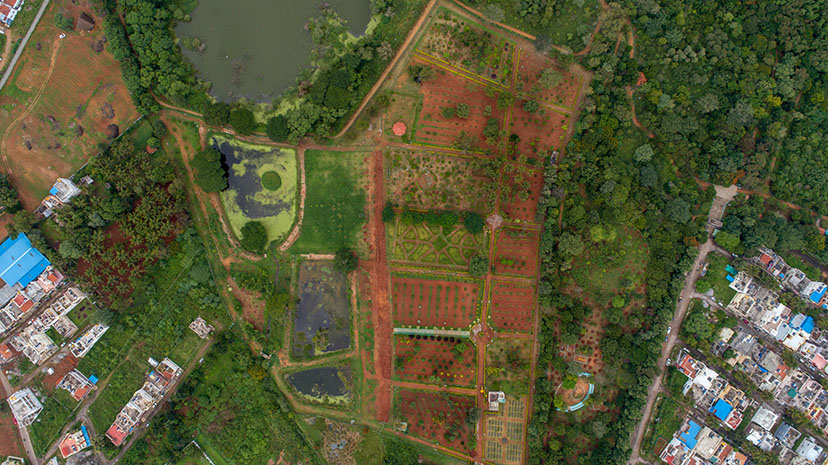
The Lake attracts winged visitors every year akin to Ranganathittu Bird Sanctuary in Srirangapatna, Mandya district.
This Garden not only has over 450 varieties of plants but also has endangered natural species and medicinal plants. Once formally opened, it will definitely emerge as a natural study centre for Botanists, Zoology students and others who have keen interest in natural resources.
The Forest Department has conserved naturally grown trees which feed the birds. Besides, several new saplings are planted which not only add beauty to the Lake but also provide food and shelter to countless number of winged visitors.
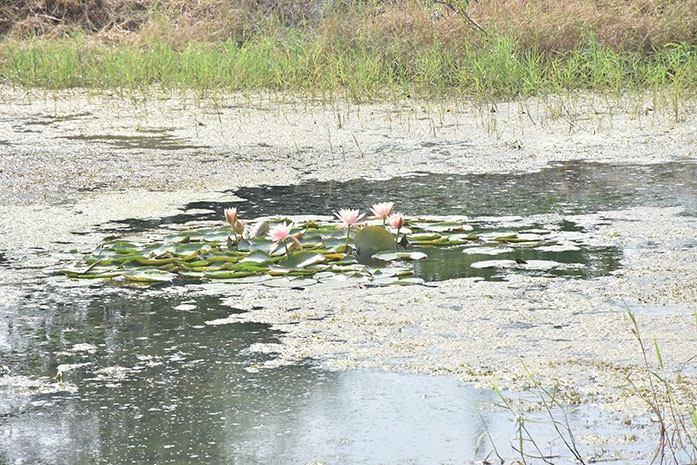
The Botanical Garden has been divided into several blocks with each dedicated to a variety of flower and plant. They are: Arboretum Block, Rose Block, Argentea Block, Plumeria Block, Topiary Block, Fruits Block, Butterfly Park, Minor Fruit Block, Native Species Block, Palms Block, Medicinal and Aromatic Block, Rockeries Block, Lotus Pond, Bamboo Block, Ficus and Endangered Species Block.
Inside the Garden, there is walking path, jogging area, resting place and stone mantap to give a natural look. A large number of cherry fruit trees are planted to attract butterflies to the butterfly park like the one at Karanji Lake in city. This park will be developed as the butterfly breeding centre.
The entry fee to the Botanical Garden is likely to be Rs.10 or Rs.20 per head, and it will be open for public between 8.30 am and 5 pm. The entire Park has been declared ‘no-plastic’ zone. Once fully developed, it will emerge as a ‘knowledge hub’ for many people. A 24 X 7 watch and ward will be appointed to check illegal activities.
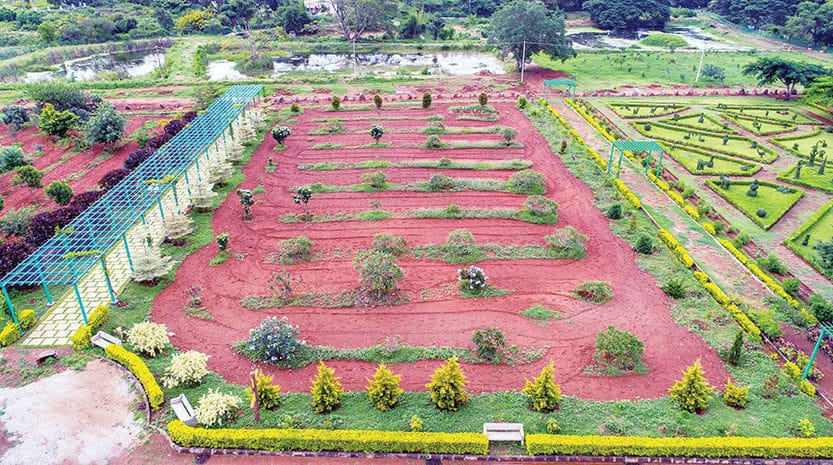
Pollution
However, one of the major concerns has been the flow of untreated sewage water into the Tank from the surrounding areas like Aravindanagar, Dattagalli, Ramakrishnanagar, apart from water from Rajakaluve. This has posed a threat to the very existence of this water body. Any failure to address this problem will totally pollute this Lake, warned a nature-lover.
It may be recalled, there were plans to create a 33-acre Botanical Garden near Lalitha Mahal Palace Hotel some years ago but it did not materialise.
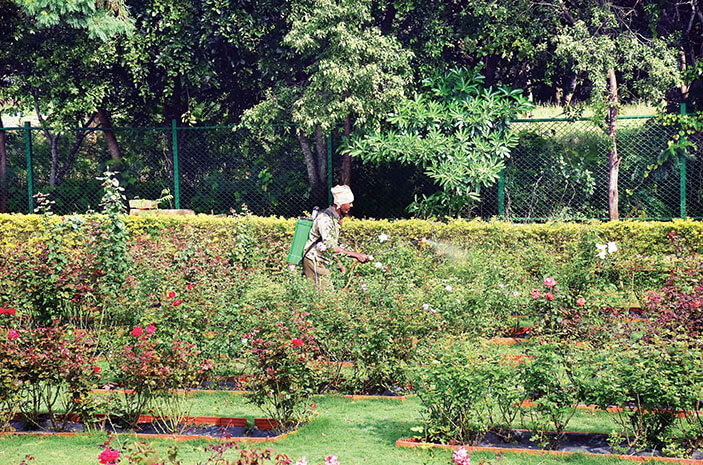
Importance of Blocks
Arboretum: An arboretum in a general sense is a botanical collection composed exclusively of trees. More commonly a modern arboretum is a botanical garden containing living collections of woody plants and is intended at least in part for scientific study. An arboretum specialising in growing conifers is known as a pinetum.
Argentea: Celosia argentea, commonly known as the plumed cockscomb or silver cock’s comb, is a herbaceous plant of tropical origin, and is known for its very bright colours.
Plumeria: It is a genus of flowering plants in the family Apocynaceae. Most species are deciduous shrubs or small trees.
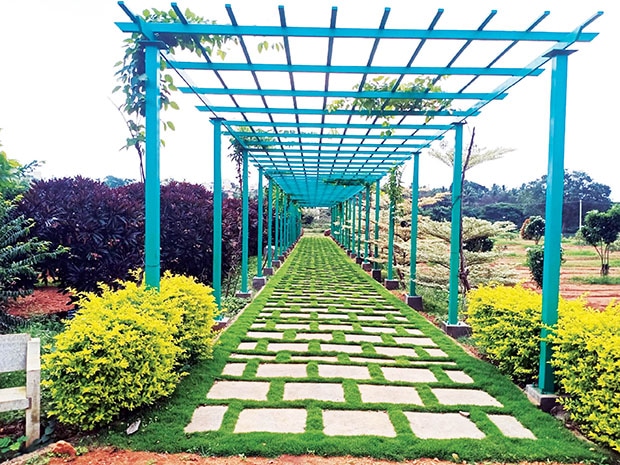
Topiary: The art of practice of clipping shrubs or trees into ornamental shapes.
Rockery: A rockery is a raised part of a garden which is built of rocks and soil, with small plants growing between the rocks.
Ficus: A genus of about 850 species of woody trees, shrubs, vines, epiphytes and hemiepiphytes in the family Moraceae. Collectively known as fig trees or figs.
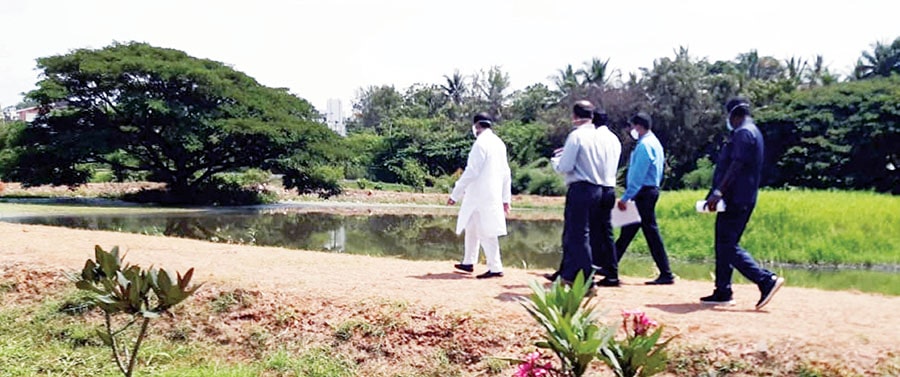
Minister inspects Lake Garden
Horticulture Minister K. C. Narayana Gowda visited the Botanical Garden on Oct. 17 and went around the Lake area. Senior officials from the Department explained to him the concept on which the Garden had been created. The formal inauguration is likely to take place next month.



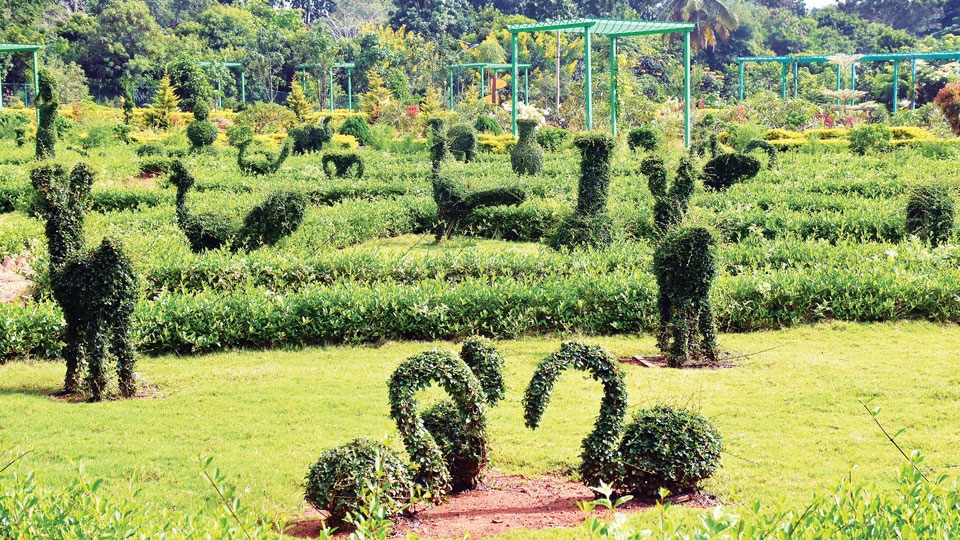




Recent Comments